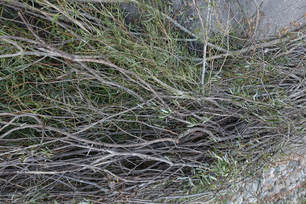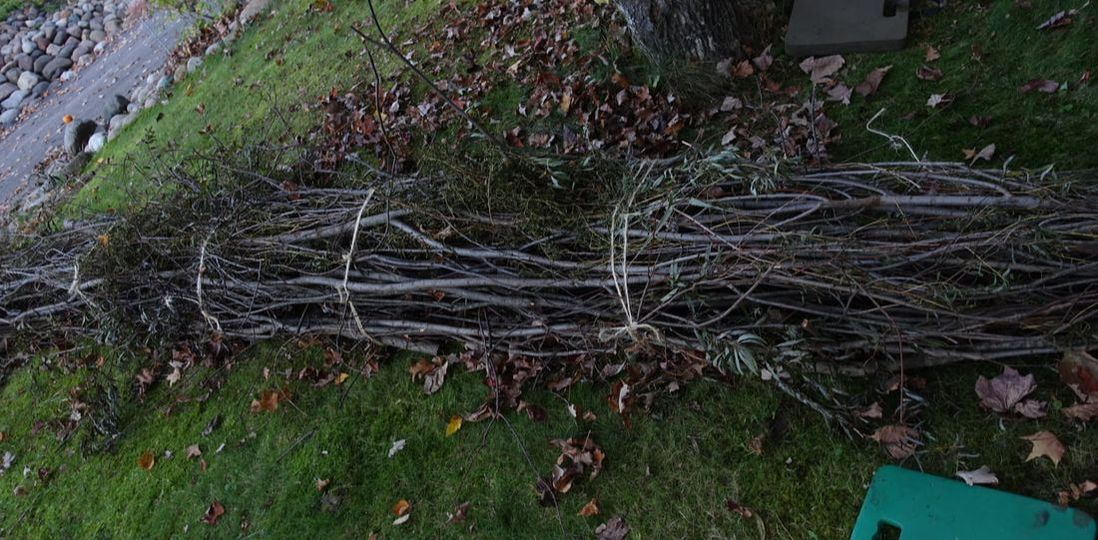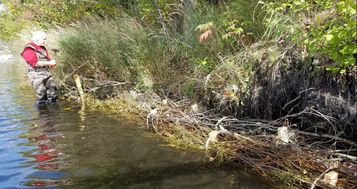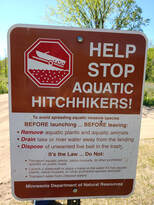|
Willow Wattle Install – a guide to DIY
Posted 11/01/2017 by Kathy Peterson
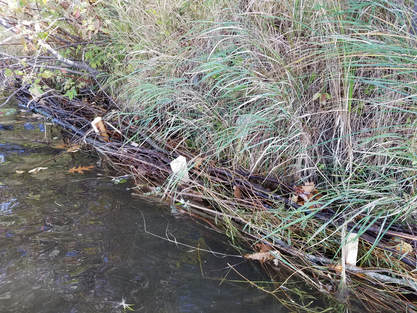 Installed Willow Wattle - Kathy Peterson Installed Willow Wattle - Kathy Peterson
My shoreline was in such sad of shape I wanted to do something this year. I found out that I could not change the shape of the shoreline, or plant any new vegetation without a permit. But, what I could do is install Willow Wattle. Willow Wattle is simply a natural buffer between my badly eroded shoreline and the water action caused by waves and ice. This will be a part of many of the restoration projects next year with our community grant.
This is something you can do yourself. It is not “difficult” but it is work and it took a “little” time with only my husband, Bob and I doing it alone. Next year, there will be a large community of lake shore owners and with everyone’s help, it will be easier and go quicker. As a preview, I thought I would give you a little “How To” so you can be prepared for part of what we have coming up. What is is and what does it do?
Willow Wattle is a natural log you make out of willow branches. The logs are staked in front of your damaged shoreline. The log will break up the wave action as it hits your shore, thus preventing more damage.
If your shoreline is undercut and it breaks away, it will fall behind the willow wattle where it will catch the bulk of the erosion. This keeps your shore from washing away.
The other thing willow wattle does is to catch natural debris that washes to your shore. The waves will wash it over the log but the undertow back out does not lift the debris back over the log. This debris will naturally build new soil along your shoreline as it composts. This natural compost is the perfect place to plant native plants with good root systems that will stabilize your shore from future issues. Remember, the DNR likes to know what you are planting at the water. You can aid in the compost process by raking the debris in your water that washed up on your shore but does not wash into the wattle zone. Be careful with live plants. You don’t want to be pulling out the Lilly Pads or breaking the Milfoil into pieces to spread.
How do you Make and Install the Wattle?
This is where the work starts. We spread the prep work out over several days. We did the actual water install in about 5 hours one Saturday. This included tying about ½ of our logs, since we ran out of time the day before.
The basic steps are
What happens next?
Good Question!
Next year, with our shoreline project, I will have a permit to plant fun native plants that will rebuild my shoreline to its intended beauty. You actually plant the plants behind and right INTO the willow log. The beauty of these natural plants is that they need the water on their roots, the dirt can come later. And good to know for those that are doing the willow wattle logs next year... you do not have to wait to plant. The grant process will include the permits and the plants. As time moves on, the "log" effect will start to soften and look much more natural. By the time the twine and stakes start to break down the compost and plants should have done their job of growing a dense deep root system that will hold the whole thing in place. In no time, you won't even recognize the willow logs. As for me, since I have a few sheared off areas, I may choose to do another row of willow wattle in some places to bring back the a natural slope. Time will tell. |

